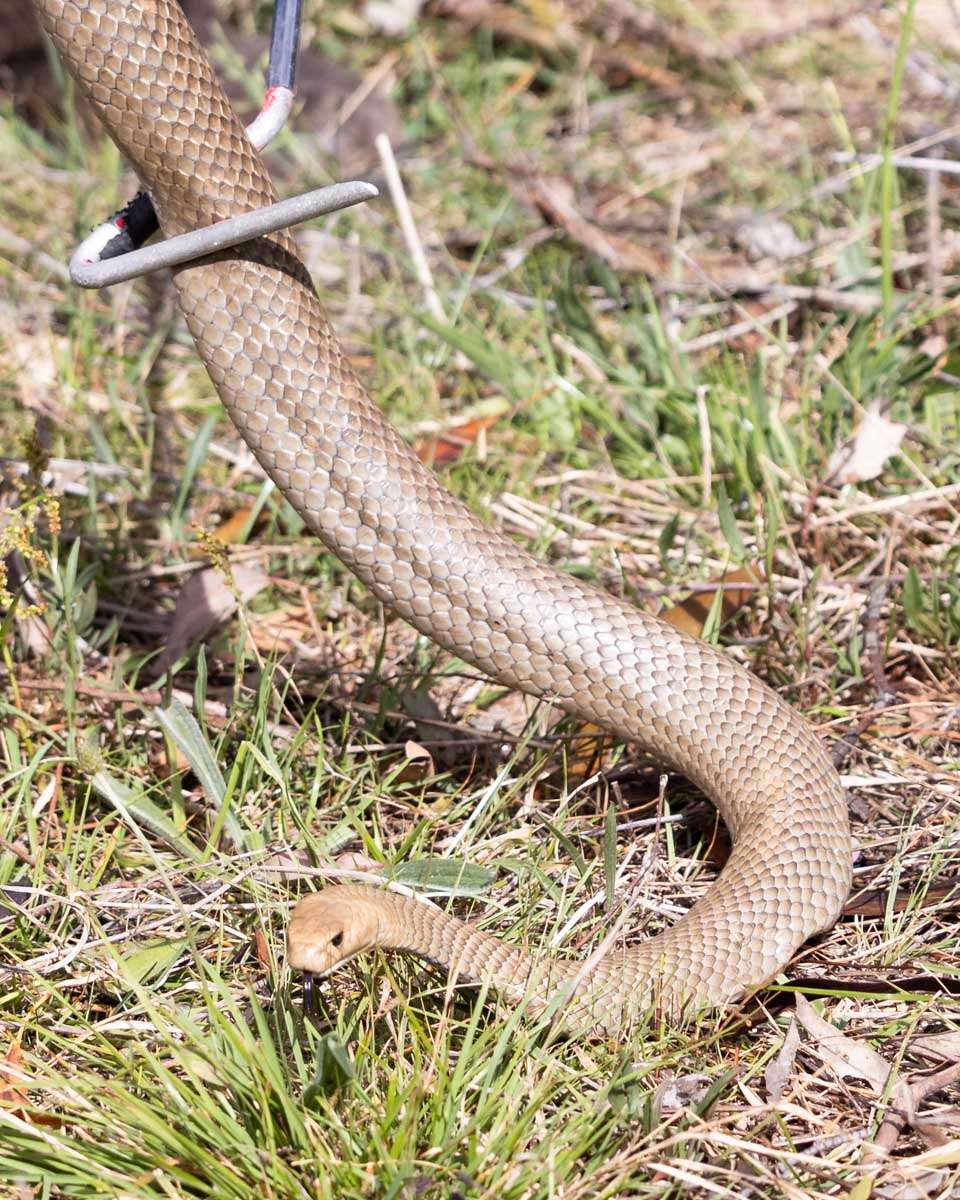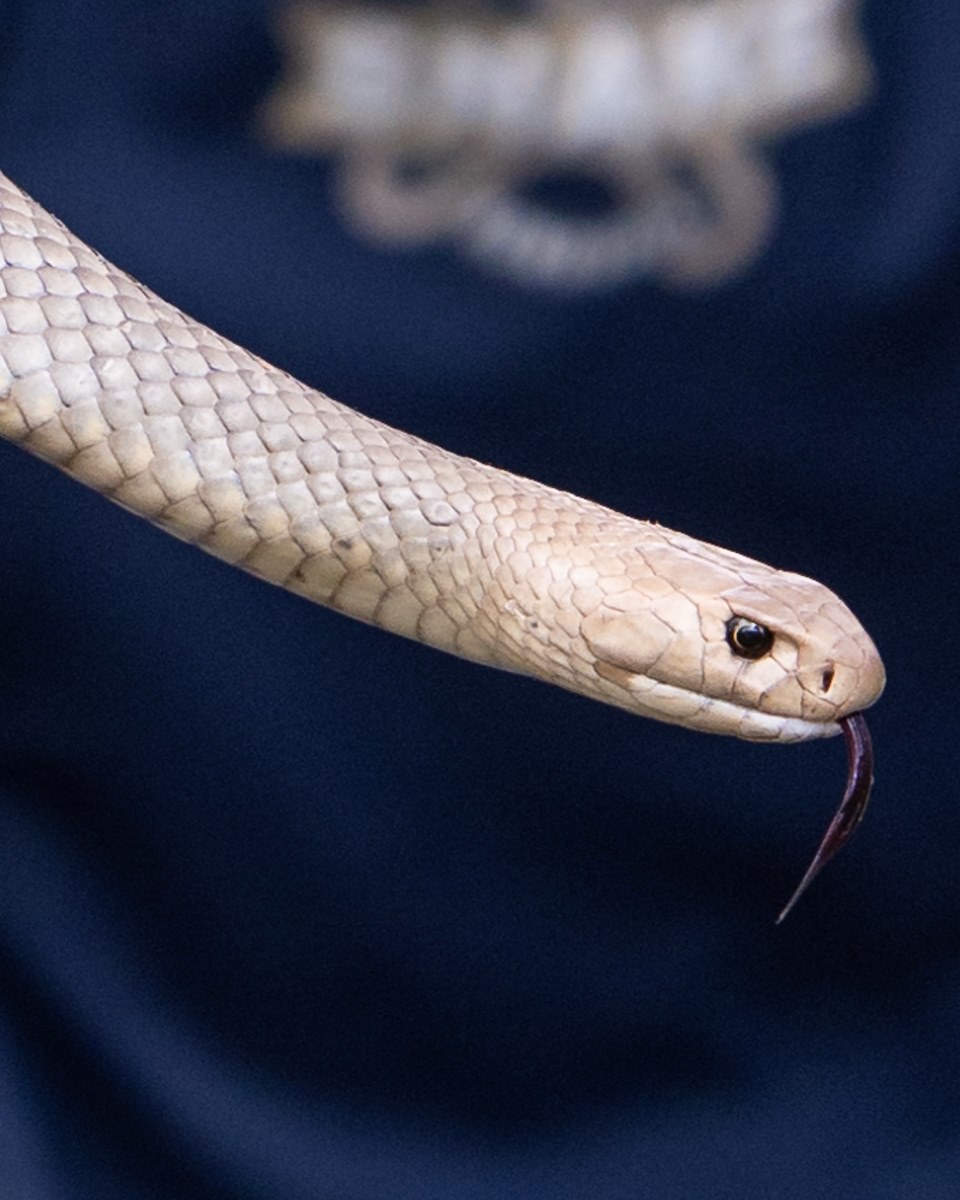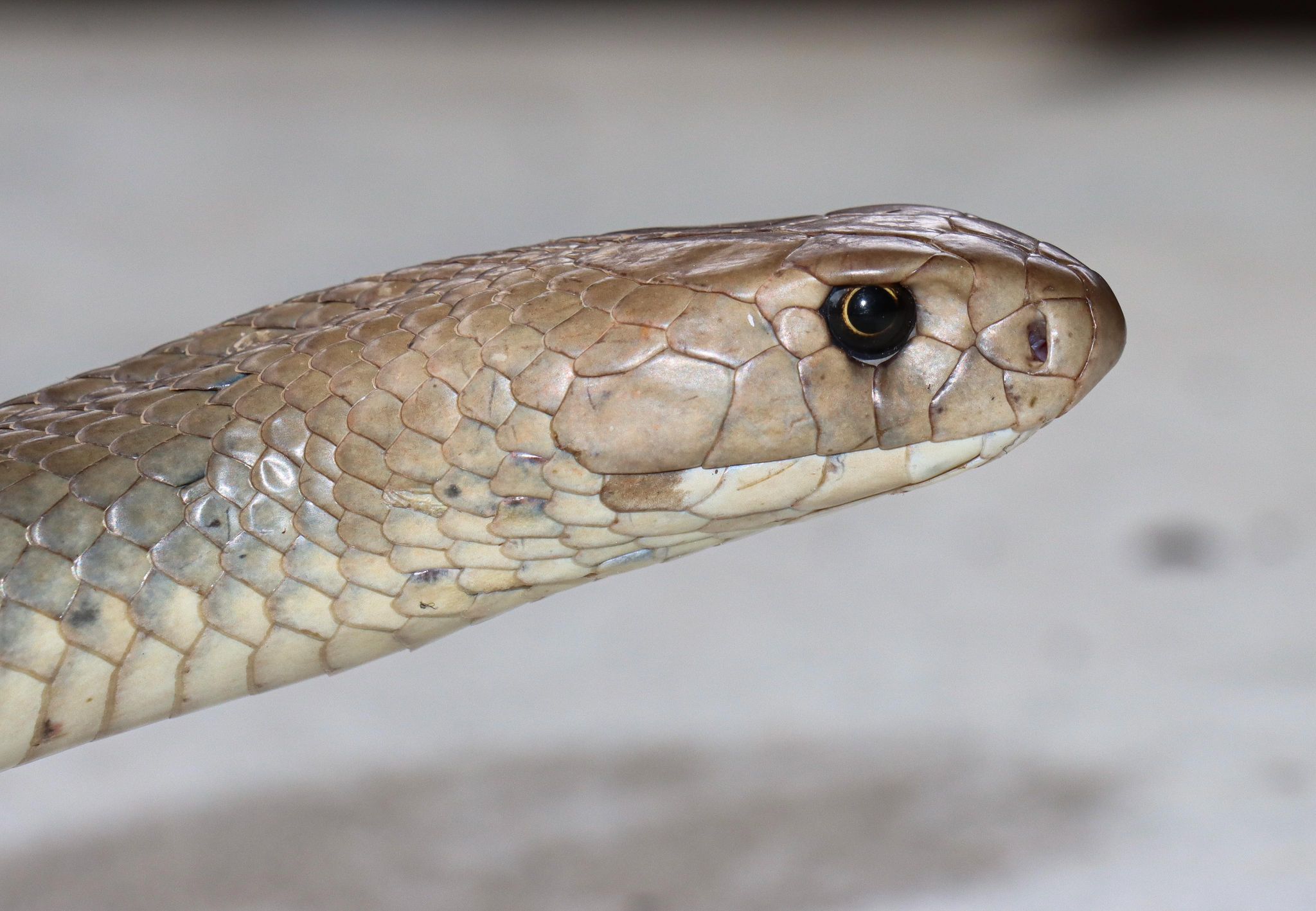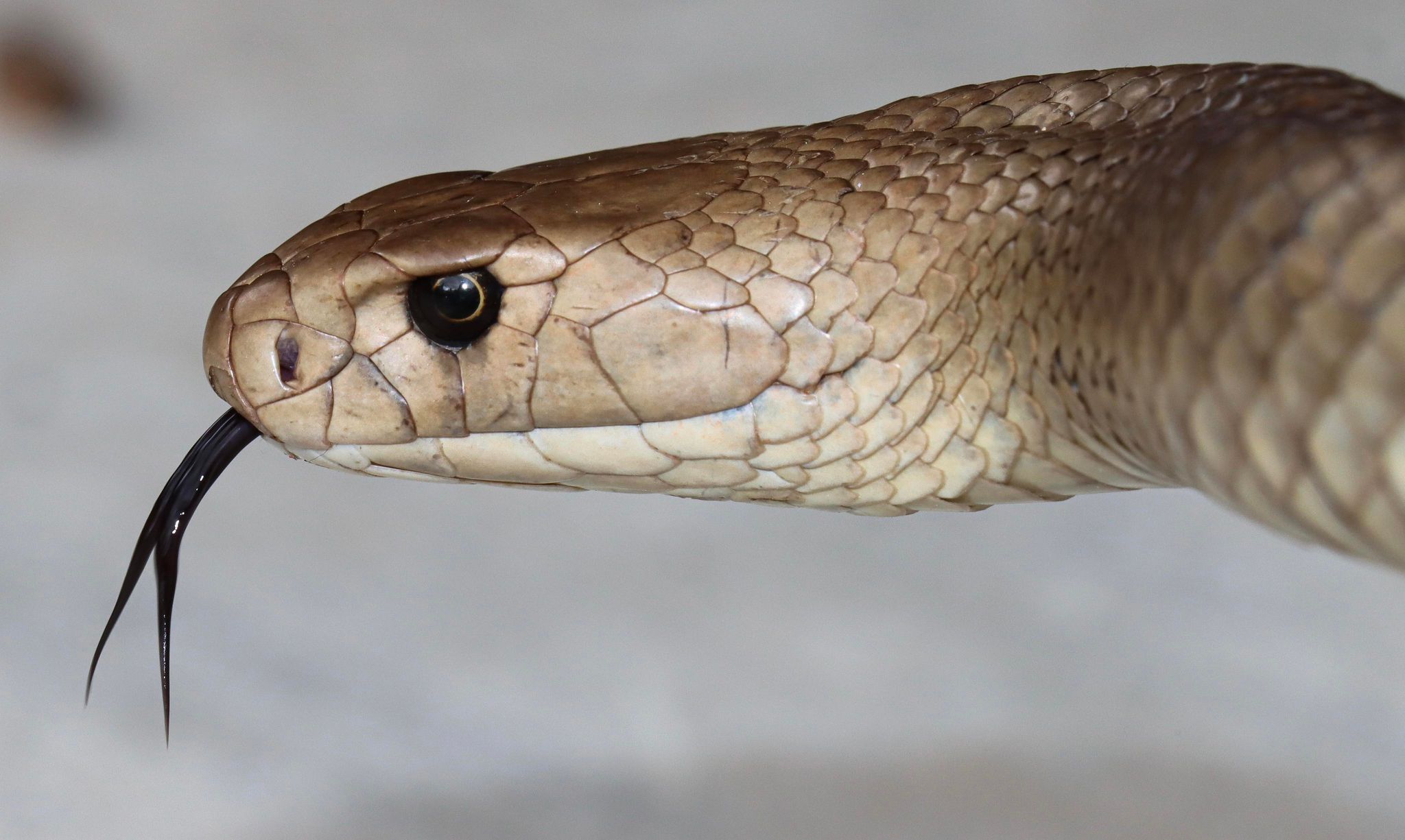Facebook flocked when a video of a snake caught between a flyscreen and glass door at a Canberra residence was posted to a community page earlier this month. The video showed an Eastern Brown snake caught between the two doors and an experienced snake removalist safely extracting the reptile.
That man is Australia National University Associate Professor Gavin Smith, owner and operator of ACT Snake Removals and primary investigator of the Canberra Snake Tracking Project.
Not wanting to interact with the animal and worried for the safety of his dog, the property owner called ACT Snake Removals for help. Professor Smith is experienced in removing the legless creatures safely.
“These animals are not aggressive, they are defensive – different variations and gradients of defensiveness in terms of the situation the snake is in. It’s going to try and survive,” says Professor Smith.
“But unfortunately, Canberra is getting bigger, more and more suburbs are emerging. We’re moving more into their habitat and so of course we’re going to get more human/snake interactions, more dog/snake interactions.”
From the scene, Professor Smith took the snake, affectionately nicknamed Meshy, for data collection and a health check before being released.
“Every single one – different sizes, it could be 2m long or 21cm long – they all go into a special PVC tube. We collect biological data from each snake we catch, genetic data, biometrics, facial shots and injury observations and assessment. This poor guy was a heavily injured snake but still good enough to be released,” he says.
Watch Meshy’s removal:
Meshy is the classic archetypal urban adapted brown snake, explains Professor Smith. Living a precarious and risky life, every moment he is above ground Meshy faces danger. At an estimated five years old, the snake measured 1.54 metres long, weighed 715 grams and his body told a tale of life under pressure.
“That snake is heavily burdened by preexisting injuries. I can’t tell exactly what has caused those injuries – it could be human, it could be a vehicle, I suspect a dog or a fox bite. There is a whole chunk of him that has folded in where the trauma has healed but it hasn’t healed properly,” says Professor Smith.
Saddened by the fact that 80 per cent of the snakes they evaluate have preexisting injuries, Professor Smith says it is an indictment of our lives that snakes get so persecuted when they don’t have to be.
“Some of these injuries are the result of interactions with different animals in the environment, but they are also from humans harming them deliberately.”
Snakes are protected throughout Australia; it is illegal to kill, interfere or harm any snake unless they threaten life. Large fines and jail sentences are potentially in store for those who do. Professor Smith believes that the persecution of the animals is rooted in a simple misunderstanding of the creatures from a long history of anecdotes, myths and urban legends around their nature.
“I spend every single day literally of my life working for these guys. I’ve seen a completely different side of them and I’m so passionate to convey what that side of them is, which is very sensitive animals, very cryptic animals, very timid and just want to get into safety, just like we do,” he says.
What to do if you see a snake
The tides are starting to turn as more people are educated about snakes. Rather than trying to remove or scare the creature off, they are choosing to call a snake handler or to let them be. Professor Smith explains the most important thing to do when seeing a snake is not to panic as it is totally normal to see a snake about in their country.
Next, you need to assess the situation. Do you have children or pets nearby? Is the snake inside a building? Perhaps calling a snake handler is the best option. If you have come across the snake in a clearing or outdoor space, it might be better to just let it be. Like you, snakes want to go on their own way with the least disruption possible.
“They will just use their autonomy and take off and disappear or they’ll stay completely still, camouflage and think ‘I’m looking forward to that two-legged or four-legged thing moving away from me’,” Professor Smith says.
“Most of their life is on their bellies on the ground, so everything above them is scary. They’ve been hardwired into understanding that they’re going to get harmed by things above them, an aerial attack.”
Most of the time, the golden rule if a snake is coming towards you is to be like a tree, don’t move, and let it pass you by. It is highly unlikely that a snake will actively seek you out, as it is terrified and wants to be left alone.
“Of course, some snakes at different points are stressed and so they will react always a bit situationally. They may have been chased around with a shovel, bitten by a dog, cornered, might be surprised by someone standing on them, there are different variations of behaviour,” says Professor Smith.
Releasing Meshy



CW was fortunate to be invited to Meshy’s release, watching as the stunning calm golden brown snake took its time to leave the bag and explore its new home. Professor Smith carefully chooses his release sites considering optimal habitat, urban development and private property. Unfortunately, he can’t guarantee any snake’s survival.
“There’s all these other snakes out there that snake will have to compete with now, that snake doesn’t know where it is; it’s going to have to find and establish a new range. All these things are risks I’m contributing to and implicating, but still, I think it is a better solution at this point to move this guy,” he says.
Microchipping the snakes being released means if the snake is recaught, Professor Smith can compare the data to see how much the creature has grown and learn more about their movement behaviours.
“That is complemented by the Canberra Snake Tracking Project. We’re tracking a small sample of snakes with radio transmitters surgically implanted by a wildlife vet. That allows us to go out and find that snake. We’ve been doing that for three years now and that’s trying to understand, does that guy survive when he moved to a new environment.”
Already burdened with enough trauma, Meshy won’t be part of the ethically run project.
Another concern that is showing up during the health checks is detected in the scat of the snakes. In the brown snakes, which eat a diet heavy with frogs, they are showing up with parasitical worms called sparganum. Professor Smith says they are worried about what impacts the tapeworms might have on the health and wellbeing of the snakes.
“There’s a whole side of snake ecology that we don’t know enough about because they are really important animals. If we just keep ignoring them, framing them as bad, I’m worried about the future of reptiles and how well they are going to do,” he says.
Human-driven health complications are also coming up in those species that have diets consisting of rodents; many snakes show evidence of rodenticides in their waste.
“The rats have been killed, the mice have been killed by the poison, and the snakes are getting secondary poisoning. Not just snakes, also birds – the whole food web is affected by the contamination,” says Professor Smith.


Predominately working with Eastern Browns, Professor Smith has connected to the snakes and wants to champion them whenever he can. As a scientist, he says it’s his duty to give people the facts about these curious creatures that greatly impact our natural ecology.
“If we don’t have these guys around, we’re going to have all sorts of problems with our ecosystem being unbalanced. Lots of rodent plagues because these guys are natural predators, but they’re also food types for a lot of native animals as well. It’s a whole delicate ecosystem we are part of, and they are mid-level organisms in it.”
Follow the removal and releases of ACT Snake Removals via their Facebook page.
Get all the latest Canberra news, sport, entertainment, lifestyle, competitions and more delivered straight to your inbox with the Canberra Daily Daily Newsletter. Sign up here.



